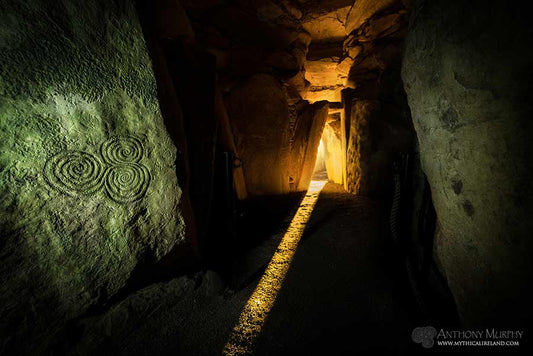
The lighting of the sacred Bealtaine fire at Uisneach by Manchán Magan
A few images from the lighting of the great Bealtaine fire at the Hill of Uisneach, County Westmeath, last night. There is an ancient tradition associated with Uisneach that the Bealtaine fire was lit there long ago. The modern celebration of the fire festival is resuscitating that ancient tradition.

The place name Uisneach Mide (Uisneach in Mide, Mide being the 'middle kingdom') has been translated variously as 'temples', 'hearth' and 'in the middle'.
According to the Dindshenchas (lore of the ancient places), the chief druid Nemed lit the sacred flame at Uisneach that 'shed the fierceness of fire ... [for seven years] over the four quarters of Erin', and there is mention elsewhere that the landscape around Uisneach was shrouded in a 'cloud of fire'. There is further mention that 'five streams of fire' emanated from Uisneach's hinterland.

The ancient Sun God of the Tuatha Dé Danann, The Dagda, was said to have presided at Uisneach, with 'Ireland stretching equally far from it on every side, to south and north, to east and west'.
Uisneach represents an axis mundi, or a 'sacred mountain' at the centre of the world (represented by Ireland), and the Stone of Divisions (Ail na Mireann) is situated very close to the actual geographic centre of Ireland.

"As a number of scholars have noted, the identification of Uisneach as the 'navel' of Ireland in early literature is paralleled by representations of the centre of the cosmos as a mountain, a pillar, a fire-altar, a tree or a well of life in many other cultures and traditions around the world".
"...societies in Ireland were participant to a 'cult of the centre' that is almost universal, and raises the very intriguing prospect that the perception of Uisneach as an axis mundi was at one time fundamental to its role and significance".











